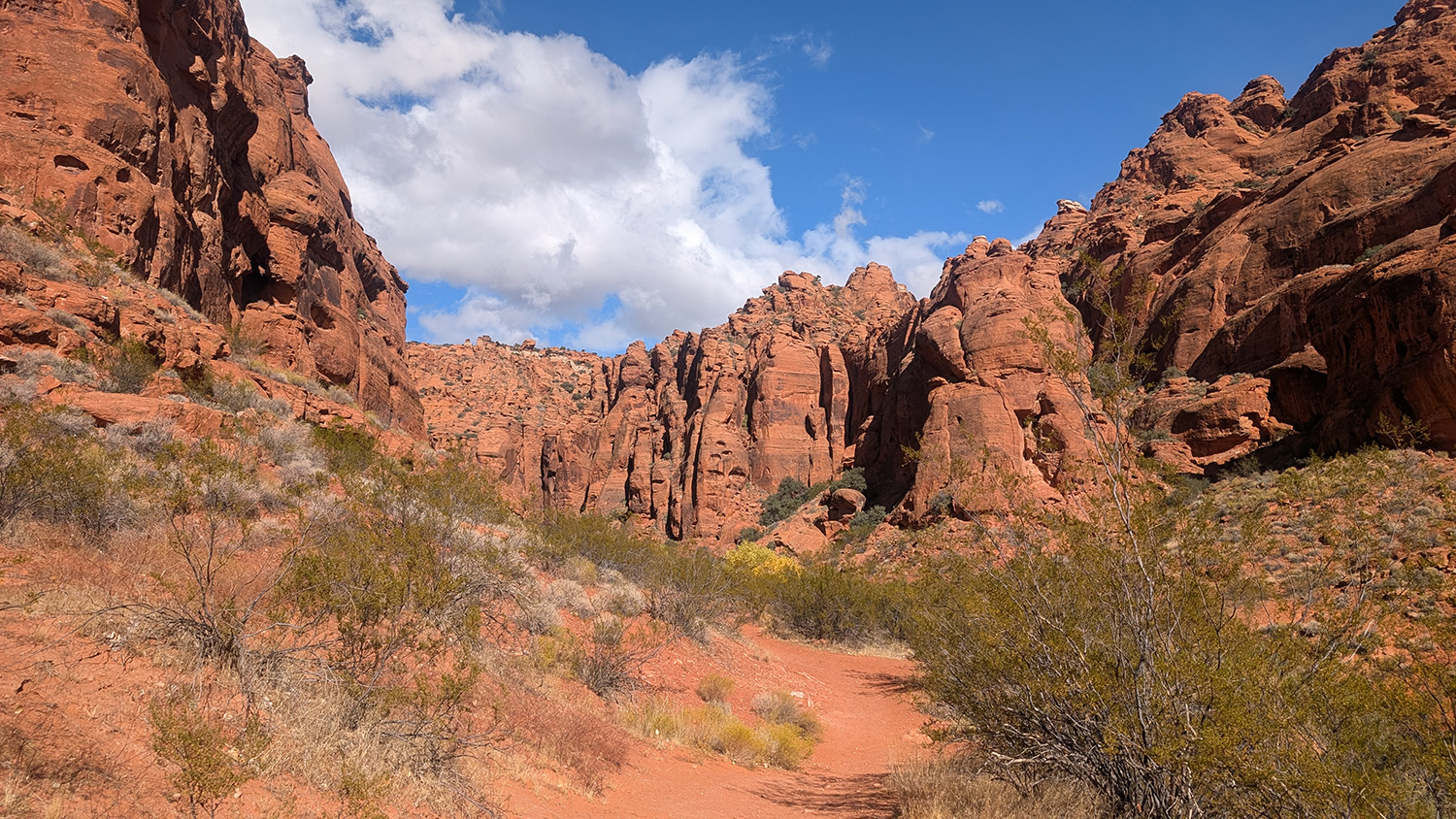Sunday Hike - Johnson's Arch

Nestled in the heart of southwestern Utah, Snow Canyon State Park offers a breathtaking landscape that tells a story millions of years in the making. The Johnson Arch hike provides a family-friendly adventure through a geological wonderland, where ancient volcanic activity and erosive forces have sculpted a landscape that seems almost too magnificent to be real.
The park's terrain is a testament to the powerful geological forces that have shaped this region over millennia. Approximately 2 million years ago, this area was a dramatically different environment. Volcanic eruptions from the nearby Santa Clara volcano blanketed the landscape with layers of basaltic lava, creating the distinctive black rock fields that now punctuate the white and red sandstone formations. These lava flows, combined with subsequent erosion, have created the unique geological canvas that hikers traverse today.
Geological processes are particularly evident in the formation of arches like Johnson Arch. These natural wonders emerge through a slow, complex process of weathering and erosion. Typically, arches begin with a small crack or weakness in a rock formation. Over thousands of years, water seeps into these microscopic fissures, gradually expanding them. During freeze-thaw cycles, water trapped in these cracks expands and contracts, slowly wedging the rock apart. Wind and additional water erosion further sculpt the rock, gradually creating the distinctive opening that characterizes an arch.
The Johnson Arch trail winds through a landscape that showcases this geological artistry. As you hike, you'll traverse terrain that ranges from smooth sandstone to rugged volcanic rock, each step revealing layers of the area's complex geological history. The arch itself stands as a silent monument to the patient work of natural forces, a delicate balance of stone seemingly defying gravity.
Wildlife enthusiasts will find the trail equally captivating. Desert tortoises, though rarely seen, make their home in this ecosystem. Lizards dart between rocks, and various desert plants provide a splash of life against the stark landscape. During spring, wildflowers can transform sections of the trail into a surprisingly colorful display, with desert marigolds, Indian paintbrush, and evening primrose adding vibrant hues to the rocky terrain.
The hike to Johnson Arch is approximately 2 miles round trip and is considered family-friendly, making it accessible to hikers of various skill levels. The trail offers minimal elevation gain and provides an enjoyable outdoor experience for all ages. Hikers should prepare for exposure to full sunlight, as shade is minimal throughout the journey. The terrain can be rocky and uneven, so sturdy hiking boots with good ankle support are recommended.
Seasonal considerations are crucial when planning this hike. Summer temperatures in Snow Canyon can soar well above 100 degrees Fahrenheit, making early morning or late afternoon hikes essential. Spring and fall offer the most comfortable hiking conditions, with mild temperatures and an increased likelihood of wildflower blooms or autumn color variations.
Water is absolutely critical on this hike. Despite the seemingly inhospitable environment, the desert demands respect. Hikers should carry at least two liters of water per person, even for what might seem like a relatively short trek. Sunscreen, a wide-brimmed hat, and lightweight, long-sleeved clothing provide additional protection against the intense desert sun.
The cultural history of the area adds another layer of fascination to the Johnson Arch hike. Indigenous Paiute and Ancestral Puebloan peoples traversed these lands long before modern hiking trails existed. Archaeological evidence suggests these communities utilized the area's resources, understanding the delicate balance of desert ecosystems in ways that continue to inspire modern conservation efforts.
Conservation remains a critical aspect of enjoying Snow Canyon State Park. The fragile desert ecosystem can be easily damaged by off-trail hiking, so visitors must stay on marked paths. Each footstep outside designated trails can disrupt delicate biological crusts that play a crucial role in desert soil stability and plant growth.
Directions to the Johnson Arch Trailhead:
To reach the trailhead, start in St. George, Utah. From the city center, take Snow Canyon Parkway (Highway 18) north for approximately 10 miles. Turn towards the South entrance of Snow Canyon State Park. However, the Johnson Arch Trailhead is located before you reach the park entrance. Look for the clearly marked parking area and trailhead sign on the right side of the road. A Utah State Parks pass or daily entry fee is required.
The Johnson Arch hike represents more than just a walk through beautiful terrain. It's a journey through time, a chance to witness the extraordinary patience of geological processes, and an opportunity to connect with one of Utah's most remarkable landscapes. Each step offers a moment of reflection, a glimpse into the powerful, slow dance of stone and sky that has been playing out for millions of years.

